Walking through the corridors of an ancient fort feels like stepping into a history book where the pages come alive around you. These massive stone structures were built to withstand siege warfare, house entire communities, and project power across vast territories. Unlike ruins that leave everything to imagination, these forts invite you inside their walls to experience the rooms where soldiers slept, commanders planned battles, and entire civilizations sought protection from enemies.
The best part about exploring these historic fortifications is how much remains intact—from underground tunnels and weapon storage rooms to royal chambers and defensive towers that still offer commanding views of the surrounding landscape. Here is a list of 17 historic forts you can explore inside, each offering a unique journey through centuries of military architecture and human ingenuity.
Edinburgh Castle
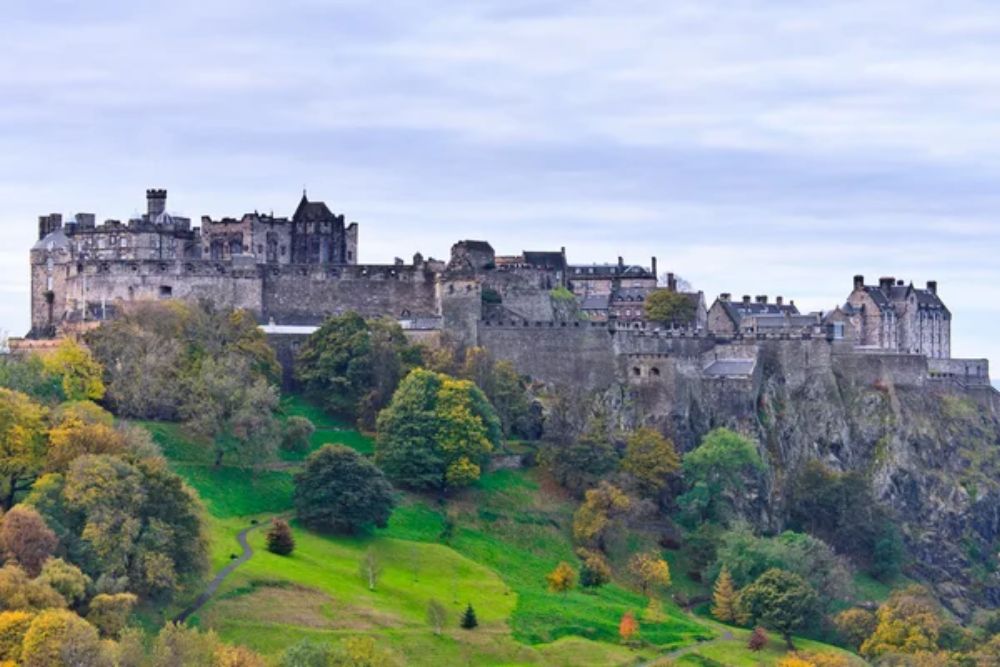
Perched on an extinct volcano in Scotland’s capital, Edinburgh Castle has been a royal fortress for over 900 years and remains one of Europe’s most complete medieval fortifications. Visitors can explore the Royal Palace, where Mary Queen of Scots gave birth to the future King James VI, the Great Hall with its impressive hammer-beam roof, and the Stone of Destiny used in Scottish coronations.
The castle’s war memorial and military museums occupy buildings that once housed garrison troops, while the famous One O’Clock Gun still fires daily from the castle’s ramparts. The complex includes St. Margaret’s Chapel, Edinburgh’s oldest building, proving how these fortifications served as both military installations and centers of royal power.
Warwick Castle
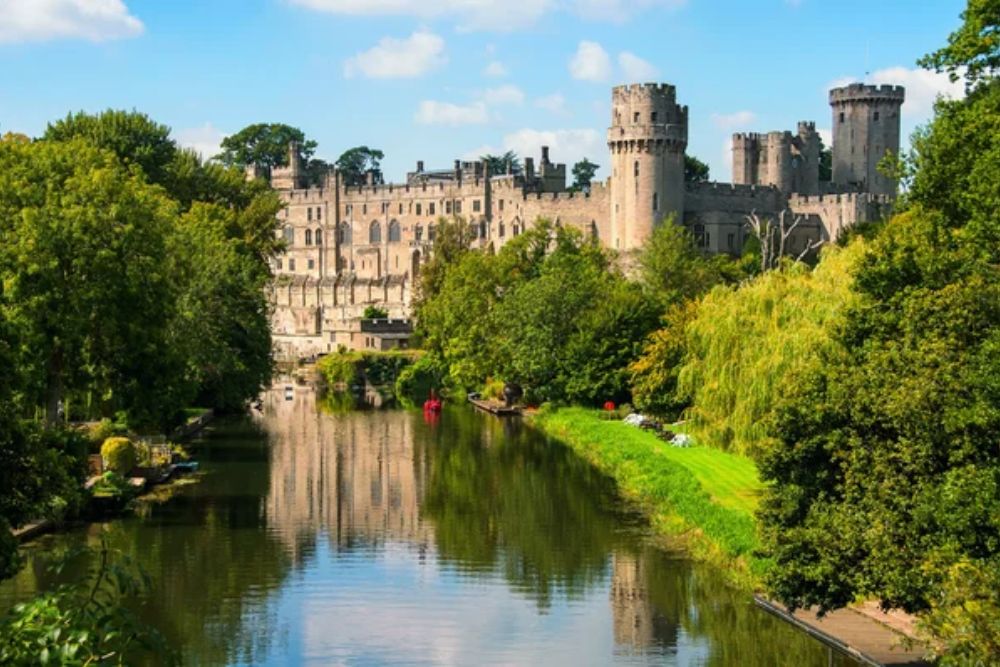
This medieval fortress in England has been continuously occupied for over 1,000 years, with each era adding new defensive features and residential quarters. The castle’s interior includes the Great Hall with its impressive collection of armor and weapons, private apartments that show how noble families lived within fortress walls, and a dungeon that demonstrates medieval justice.
Visitors can climb the towers for panoramic views across the English countryside and explore the ramparts where archers once defended the walls. The combination of preserved medieval architecture and interactive exhibits makes Warwick Castle an excellent example of how historic forts can bring the past to life for modern visitors.
Like Travel Pug’s content? Follow us on MSN.
Fort de Vincennes
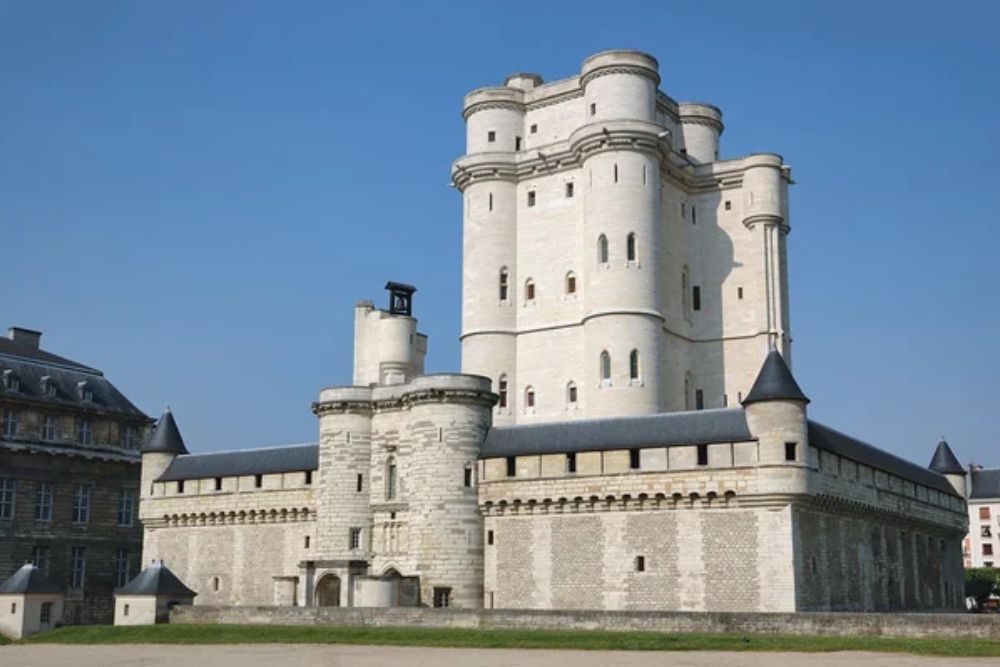
Just outside Paris, this massive medieval fortress served as both royal residence and state prison, with buildings that span seven centuries of French history. The complex includes a 170-foot-tall keep that once housed French royalty, Gothic Sainte-Chapelle with stunning stained glass windows, and casemates that were later used to imprison famous historical figures.
Visitors can explore the royal apartments where French kings lived before Versailles was built, military barracks that housed garrison troops, and underground chambers that reveal the fort’s role in French political intrigue. The fortress demonstrates how medieval military architecture evolved to accommodate both defensive needs and royal luxury.
Conwy Castle
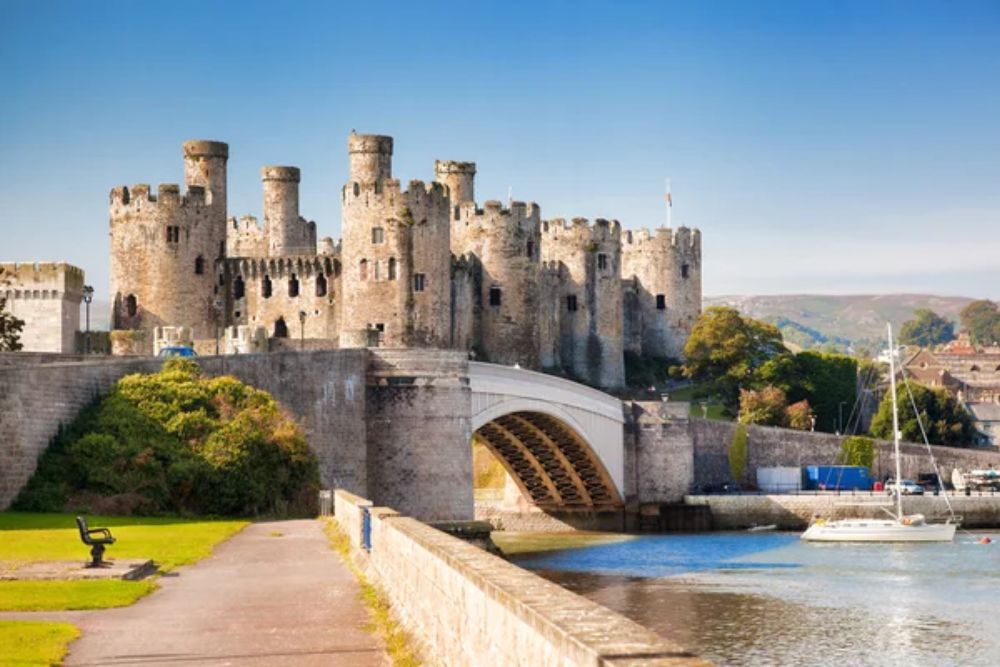
This 13th-century stronghold, which was constructed by Edward I during his invasion of Wales, is still regarded as one of the best examples of military construction from the late 13th and early 14th centuries in Europe. Visitors can stroll around the towering curtain walls that connect the castle’s eight enormous circular towers while taking in views of the Irish Sea and Snowdonia National Park.
Inside, the ruins of the Great Hall and royal apartments show how these fortifications functioned as both military strongholds and royal residences. The castle’s strategic position controlling the Conwy estuary demonstrates how medieval forts were carefully positioned to control trade routes and territorial boundaries.
Château de Vincennes
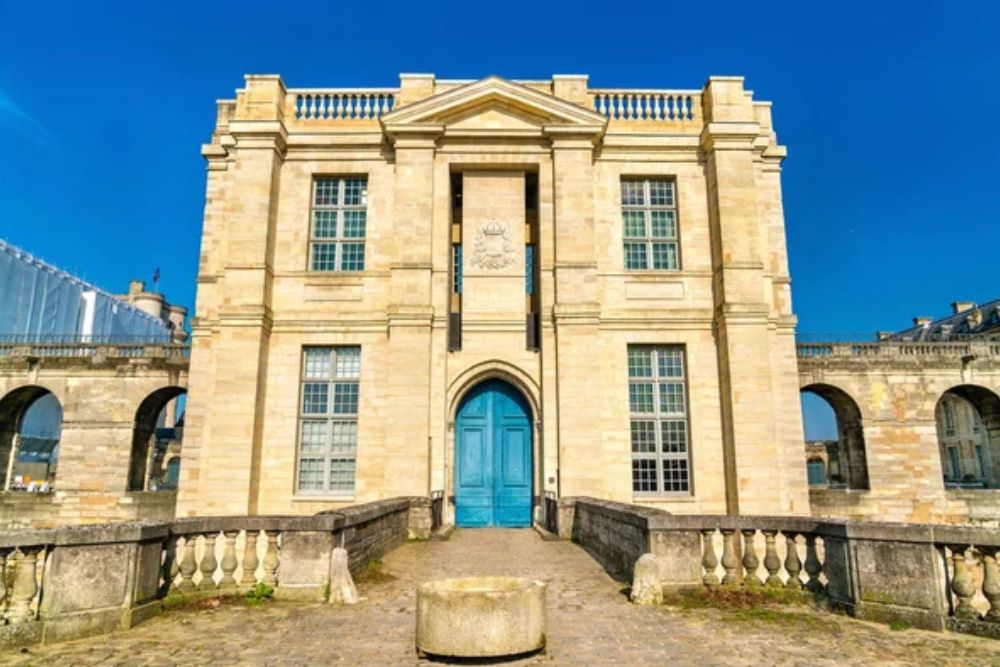
This French royal fortress near Paris served as a residence for French kings from the 12th to the 17th centuries, combining military architecture with royal luxury. The massive keep, completed in the 1370s, rises 170 feet and contains multiple floors of royal apartments that visitors can explore room by room.
The complex includes Sainte-Chapelle de Vincennes, a Gothic masterpiece with extraordinary stained-glass windows that rival those of its more famous namesake in Paris. Visitors can also explore the surrounding walls, towers, and courtyards that demonstrate how medieval fortifications evolved to accommodate both defensive requirements and increasingly sophisticated court life.
Like Travel Pug’s content? Follow us on MSN.
Caerphilly Castle

Wales’ largest castle spreads across 30 acres and features some of Europe’s most sophisticated medieval water defenses, with artificial lakes and islands that protected the main fortress. Visitors can explore the massive gatehouse complex, the Great Hall where medieval lords held court, and residential towers that show how noble families adapted castle life to changing times.
The castle’s leaning tower, damaged during the English Civil War, provides a dramatic example of how these structures survived centuries of conflict and neglect. The extensive water defenses, still partially flooded today, demonstrate the ingenuity of medieval military engineers who used landscape features to enhance fortress security.
Fort Jefferson
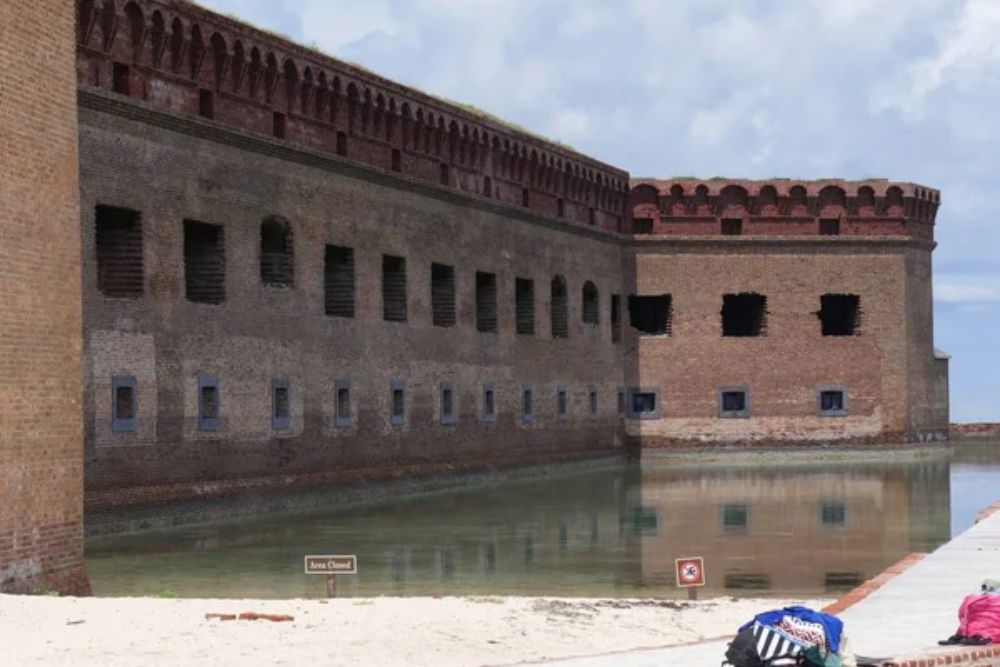
Located on a remote island in Florida’s Dry Tortugas National Park, this massive 19th-century fortress was designed to control shipping lanes in the Gulf of Mexico. The hexagonal fort contains over 16 million bricks and includes casemates, officer quarters, and a parade ground that visitors can explore while surrounded by crystal-clear waters.
Although never completed, the fort’s impressive scale and isolated location demonstrate how military engineering adapted to new weapons technology and strategic requirements. The combination of military history and pristine natural setting makes Fort Jefferson unique among American fortifications, accessible only by boat or seaplane.
Krak des Chevaliers
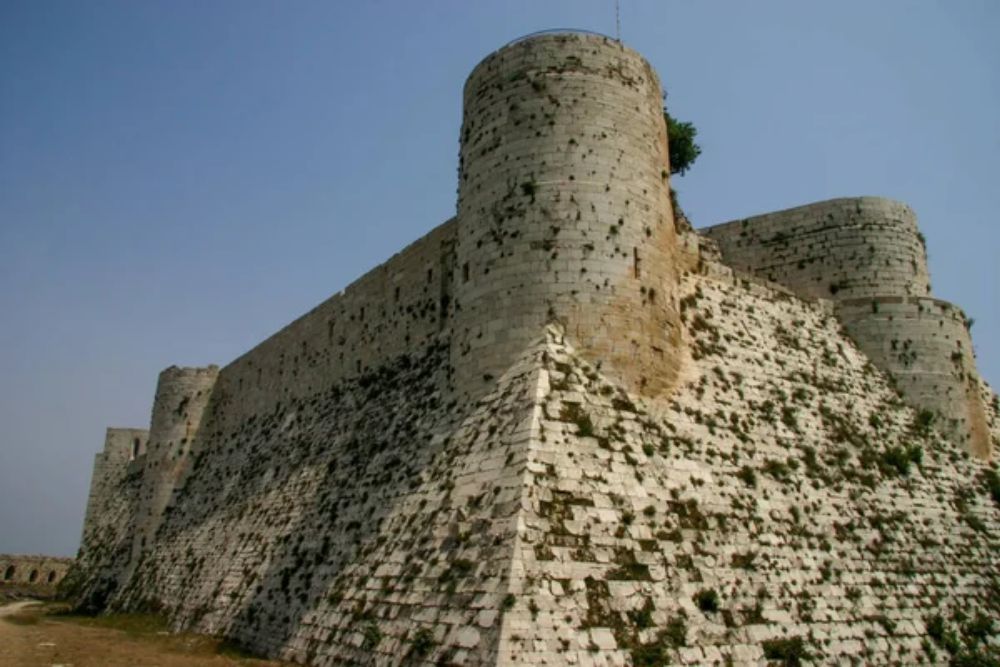
This Crusader castle in Syria represents the pinnacle of medieval military architecture, with concentric walls and defensive features that influenced fortress design across Europe. The castle’s interior includes a Great Hall, a chapel, and residential quarters that show how Crusader knights adapted European castle design to Middle Eastern conditions.
Visitors can explore multiple levels of defensive walls, towers, and courtyards that demonstrate the sophisticated planning required for extended sieges. The fortress survived numerous attacks and earthquakes over eight centuries, proving the durability of carefully planned medieval military architecture.
Like Travel Pug’s content? Follow us on MSN.
Amber Fort
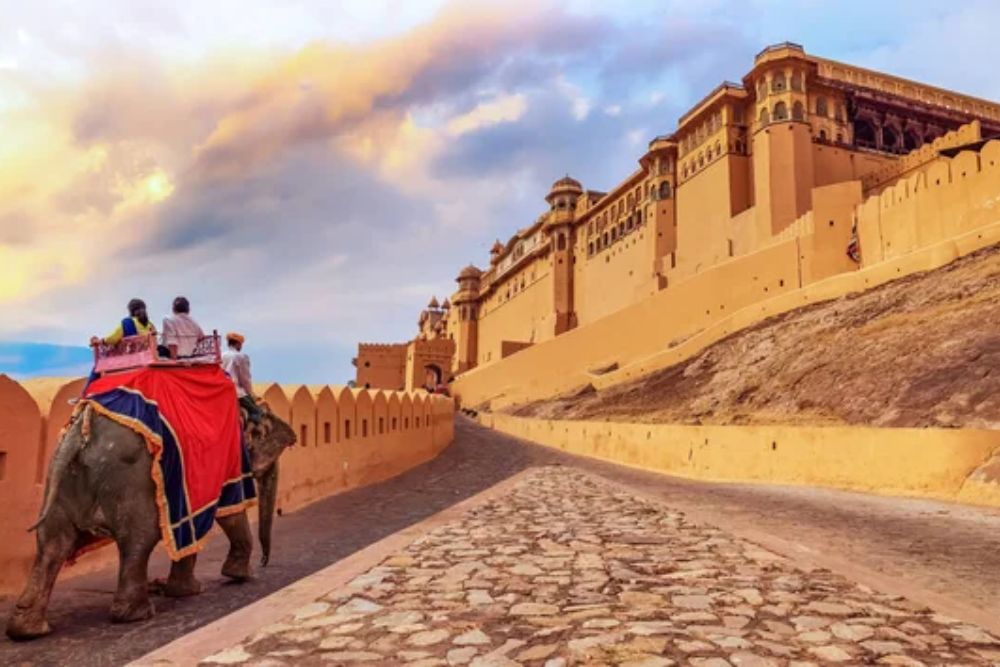
This 16th-century fortress palace near Jaipur combines Rajput military architecture with Mughal decorative arts, creating one of India’s most spectacular fortified complexes. The fort’s interior includes the Sheesh Mahal (Mirror Palace) with walls covered in intricate mirror work, royal apartments with painted ceilings and marble inlays, and courtyards designed for both defense and courtly entertainment.
Visitors can explore multiple levels connected by ramps designed for elephant access, underground passages, and defensive walls that incorporate Hindu and Islamic architectural elements. The combination of military functionality and artistic beauty demonstrates how Indian rulers created fortresses that served as both defensive strongholds and symbols of royal power.
Mehrangarh Fort
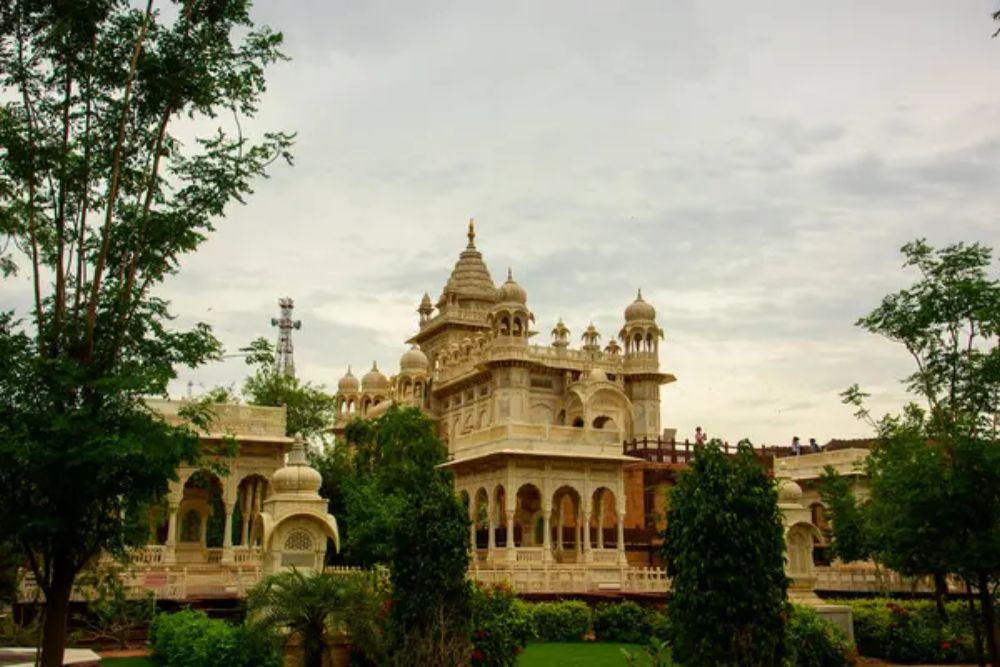
Rising 400 feet above Jodhpur, this massive Rajasthani fortress contains palaces, temples, and courtyards that span five centuries of Indian royal architecture. The fort’s interior includes museum galleries displaying royal artifacts, armory collections, and palanquins, alongside residential quarters that show how Indian royal families lived within fortress walls.
Visitors can explore multiple courtyards connected by carved doorways, each representing different periods of construction and architectural style. The fort’s commanding position provides panoramic views across the ‘Blue City’ of Jodhpur, demonstrating how these hilltop fortresses dominated their surrounding territories.
Tower of London
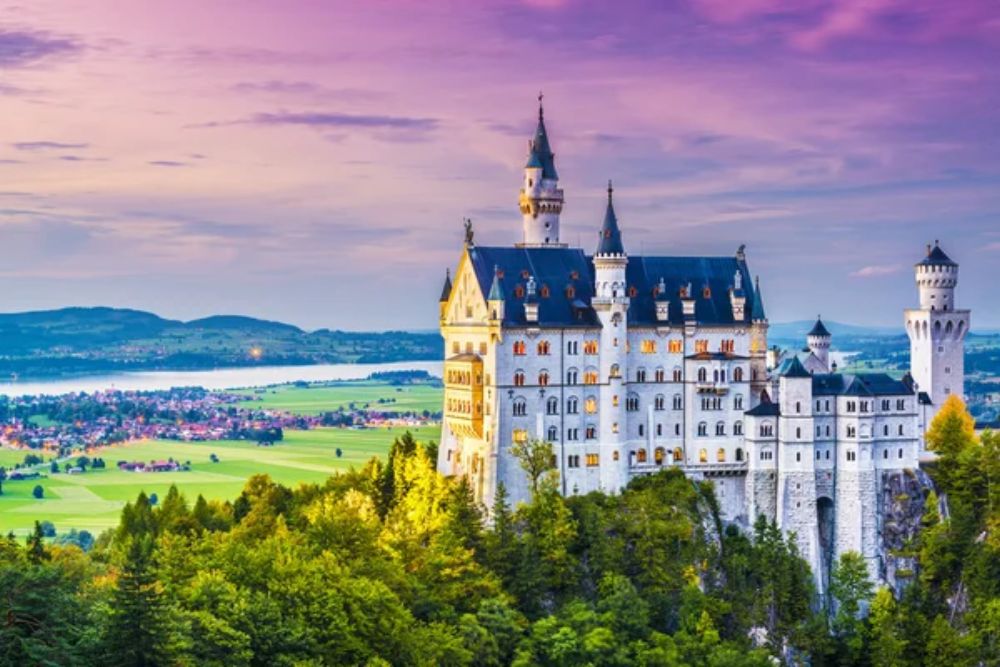
This 1,000-year-old fortress has served as a royal palace, prison, armory, and treasury, with buildings that tell the story of English history from the Norman Conquest to the present day. Visitors can explore the White Tower’s Norman architecture, the Medieval Palace where English kings once lived, and the Crown Jewels housed in the Waterloo Barracks.
The fortress includes Traitors’ Gate, where prisoners entered by boat, the Bloody Tower associated with the Princes in the Tower mystery, and chapel walls that bear prisoners’ carved inscriptions. The Tower’s multiple functions over ten centuries demonstrate how fortifications adapted to changing political and military requirements, all while maintaining their essential defensive character.
Château de Chillon

Built on a rocky island in Lake Geneva, this medieval fortress combines a stunning natural setting with remarkably preserved architecture spanning eight centuries. The castle’s interior includes the Great Hall with original wooden ceiling, underground dungeons carved from living rock, and residential chambers that show how noble families lived in a lakeside fortification.
Visitors can explore multiple levels connected by spiral staircases, defensive walls that incorporate the island’s natural features, and rooms decorated with medieval frescoes and coats of arms. The combination of strategic lake position and architectural completeness makes Chillon one of Europe’s most photographed and historically significant castles.
Golconda Fort
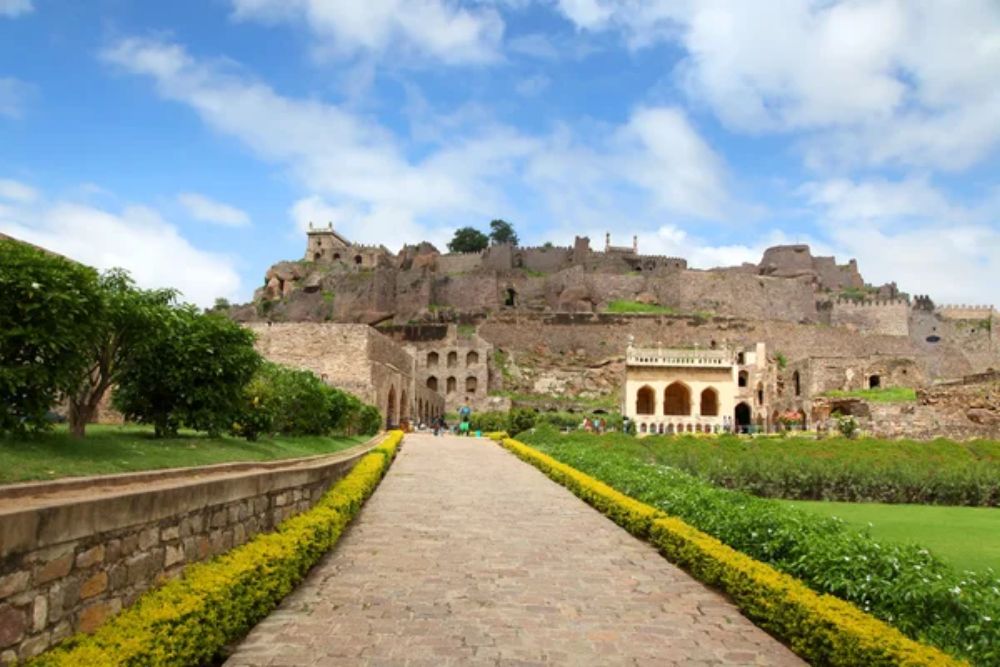
This 16th-century fortress near Hyderabad represents the pinnacle of Deccan military architecture, with acoustic systems and defensive features that demonstrate sophisticated engineering knowledge. The fort’s interior includes royal palaces, mosques, and residential quarters connected by a complex network of passages and staircases carved into the granite hillside.
Visitors can explore the famous acoustic system that allowed whispers at the entrance gate to be heard at the highest point, defensive walls that incorporate natural rock formations, and water management systems that sustained the fortress during extended sieges. The fort’s integration with its rocky hillside demonstrates how Indian architects worked with natural topography to create seemingly impregnable fortifications.
Like Travel Pug’s content? Follow us on MSN.
Carcassonne
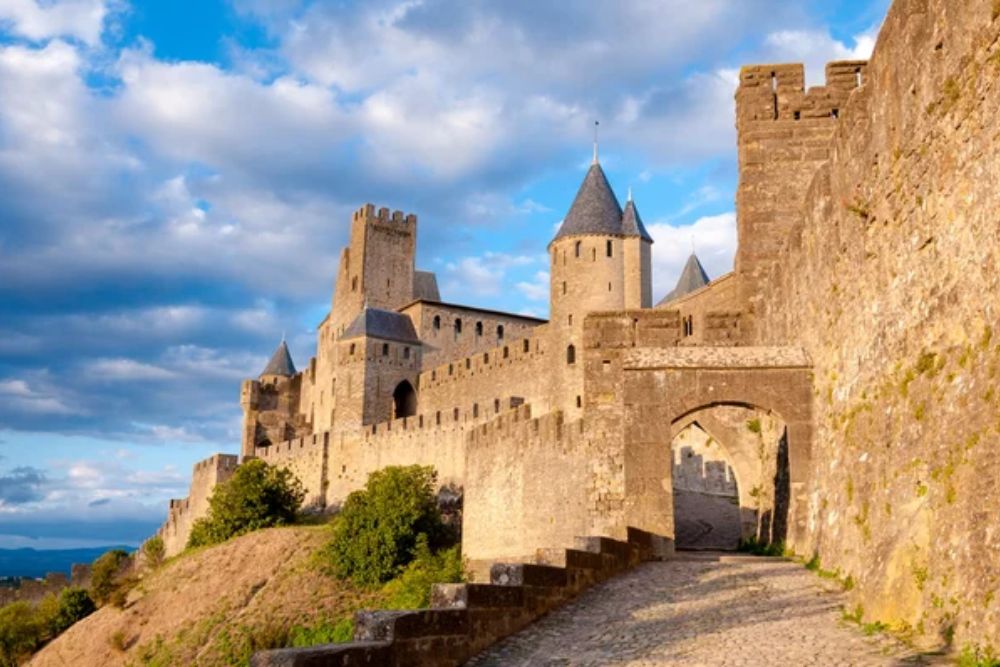
This perfectly preserved medieval fortified city in southern France contains 52 towers and about 2 miles of defensive walls that visitors can walk along while exploring the interior. The fortress includes the Château Comtal with its museum of medieval life, the Basilica of Saints Nazarius and Celsus with stunning stained-glass windows, and residential quarters that show how entire communities lived within protective walls.
Visitors can explore multiple defensive circuits, gates designed to confuse attackers, and towers that provided overlapping fields of fire along the walls. The complete preservation of this walled city demonstrates how medieval fortifications protected not just military garrisons but entire urban populations.
Red Fort, Delhi
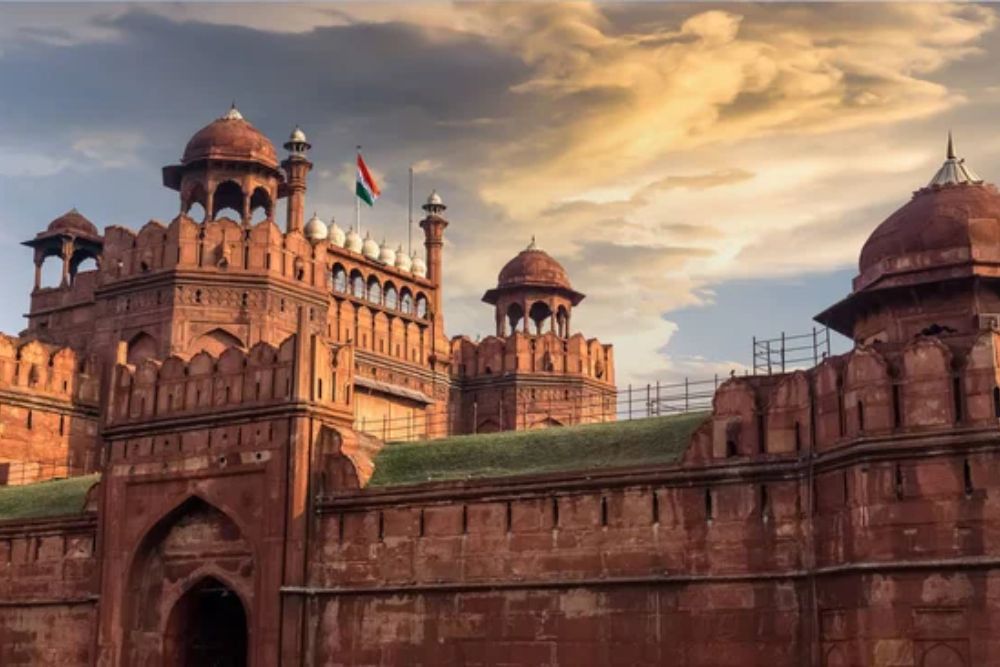
Built by Mughal Emperor Shah Jahan in the 17th century, this red sandstone fortress served as the main residence of the Mughal emperors for nearly 200 years. The fort’s interior includes the Diwan-i-Aam (Hall of Public Audience), where emperors held court, the Diwan-i-Khas (Hall of Private Audience) with intricate marble inlay work, and royal apartments that demonstrate the luxury of Mughal court life.
Visitors can explore the Rang Mahal (Palace of Colors) with its central water channel, the Pearl Mosque built entirely of white marble, and defensive walls that incorporate both military functionality and artistic decoration. The fort’s combination of military architecture and imperial grandeur shows how Mughal rulers created fortresses that projected power through both defensive capability and artistic achievement.
Hohensalzburg Fortress
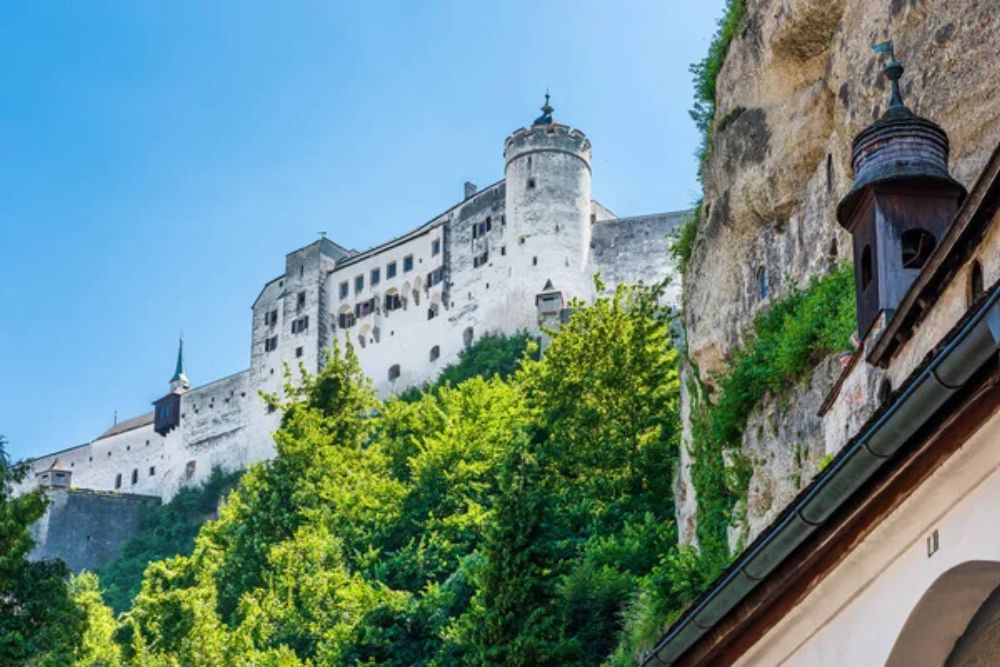
Perched above Salzburg, Austria, this 11th-century fortress is one of Europe’s largest and best-preserved medieval castles, offering visitors access to over 900 years of continuous architectural development. The fortress interior includes the Golden Hall with elaborate Gothic woodwork, the Fortress Museum displaying medieval weapons and armor, and residential quarters that show how archbishops combined religious authority with military power.
Visitors can explore multiple courtyards connected by defensive gates, ramparts offering panoramic views of the Alps, and the famous Salzburg Bull, a mechanical organ from 1502. The fortress demonstrates how ecclesiastical rulers adapted military architecture to serve both spiritual and temporal authority in medieval Europe.
Like Travel Pug’s content? Follow us on MSN.
Gwalior Fort
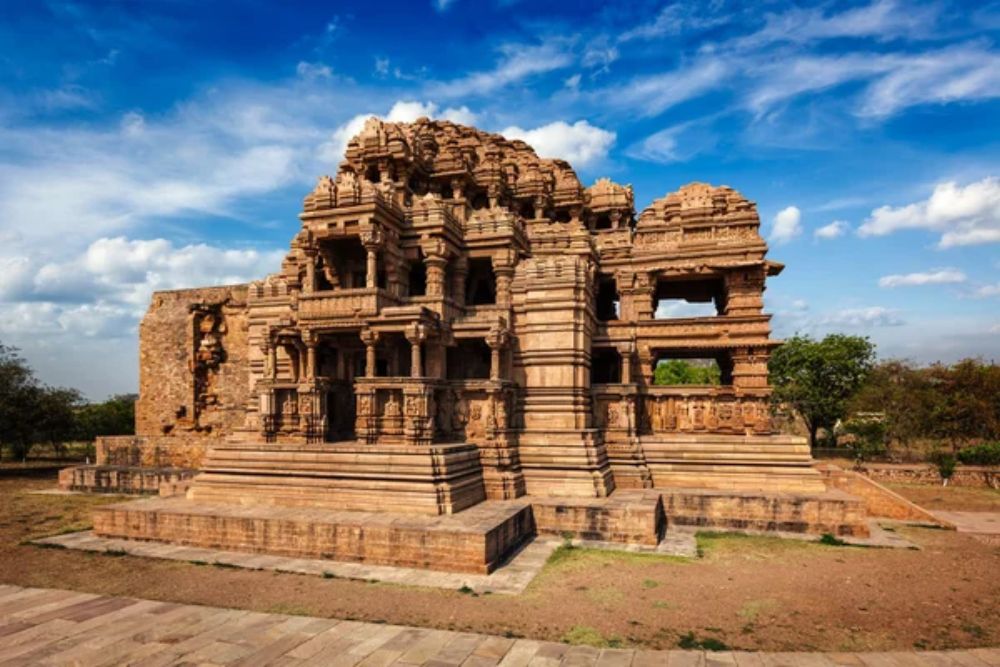
Rising 300 feet above the city of Gwalior, this Indian fortress has been continuously occupied for over 1,000 years and contains palaces that represent multiple periods of Indian architecture. The fort’s interior includes the Man Mandir Palace with its distinctive blue ceramic tiles, the Gujari Mahal palace built for a queen, and the Teli-ka-Mandir temple that combines Hindu and Islamic architectural elements.
Visitors can explore multiple defensive gates designed to confuse attackers, underground chambers and passages, and walls decorated with carved elephants, peacocks, and crocodiles. The fort’s strategic hilltop position and architectural diversity demonstrate how Indian rulers created fortifications that served as both military strongholds and centers of artistic achievement.
Fortresses of Memory and Stone
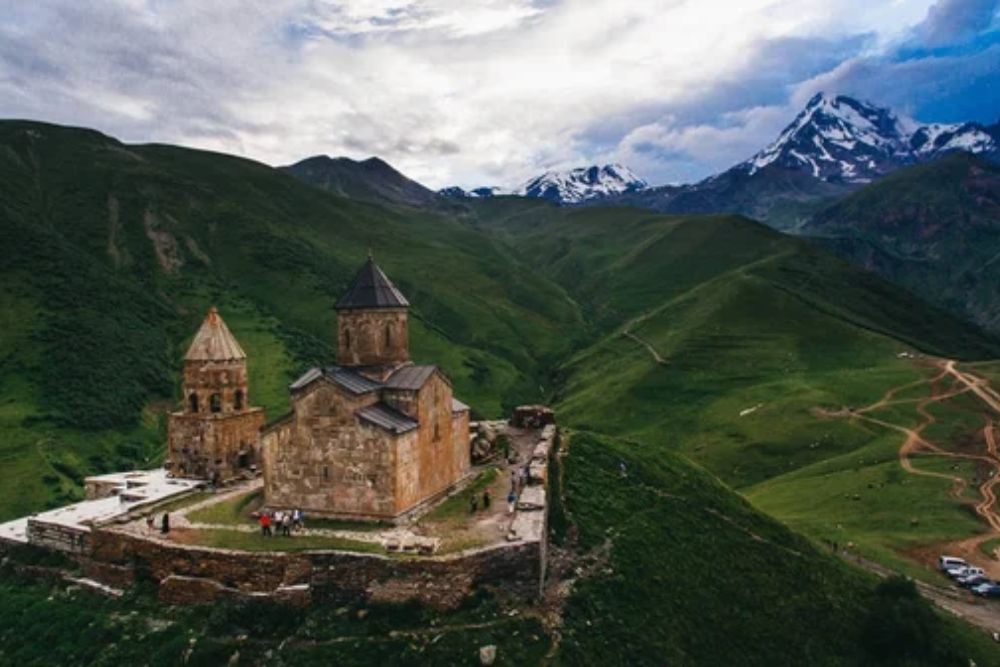
These historic forts prove that the best way to understand military history is to walk through the spaces where it actually happened. Each fortress tells a different story about how humans have sought security, projected power, and adapted to changing warfare technology while creating structures of surprising beauty and sophistication.
Whether it’s the acoustic engineering of Golconda Fort, the water defenses of Caerphilly Castle, or the romantic reimagining of Neuschwanstein, these fortifications demonstrate that military architecture has always been about more than just defense. Exploring their interiors connects us directly to the ingenuity, ambition, and daily lives of people who built some of humanity’s most impressive and enduring structures.
More from Travel Pug

- 20 Best Beach Towns in the Carolinas
- 13 Destinations Where Tourists Regularly Regret Their Trip
- 20 Destinations That Are More Magical Without an Itinerary
- 20 Underrated Adventures That Belong on Your Travel List
- 20 Cities Where You Should Just Wing It, No Planning Required
Like Travel Pug’s content? Follow us on MSN.
